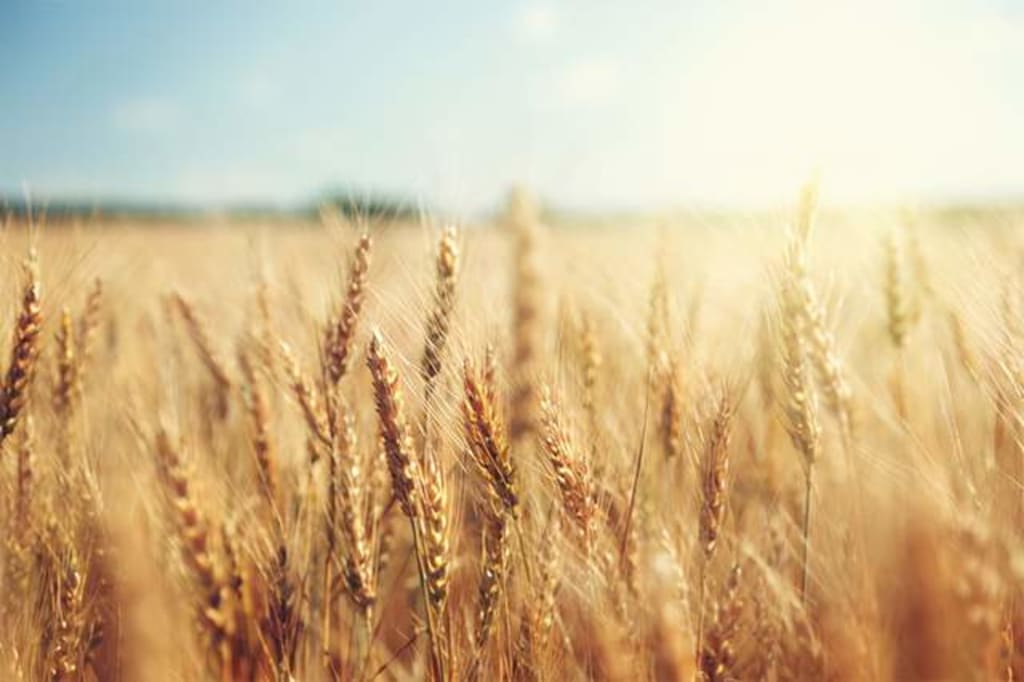Potatoes, avocados, the top ten species that exist because of humans
Ten species that exist because of humans

It seems like every day an article about humanity's extinct species appears online. It is a sad fact of life that people have hunted, eaten and killed other species for thousands of years. But it's not all bad things that humans do, we create new species.
As it happens, several species wouldn't even exist if it weren't for humans. Humans have helped save species from the extinction of other animals. We have even managed to breed new species through artificial selection, anthropogenic speciation and other processes.
If it weren't for humans, these ten species wouldn't be here, and some might surprise you.
10. Wheat
Wheat was first grown on the Fertile Crescent some 11,600 years ago. Humans harvested crops to develop mutant forms. These mutant grasses produced larger grains that retained seeds through harvesting. Over time, what we call wheat today has grown and has driven humanity ever since.
There is a theory that humans have not domesticated wheat as much as they have domesticated our crops. It was the planting of crops that ignited the fire and triggered the development of agriculture, which in turn led to the development of human civilization. If it weren't for the wheat, we'd still be wandering around eating berries and whatever else we could find.
After wheat was domesticated, humans stopped wandering in search of food. It's an interesting concept, but no matter what stance you take, it's clear that modern wheat wouldn't exist if humans hadn't grown a particularly tasty grain nearly 12,000 years ago.
09. Crab lice
Lice are one of the most annoying parasites on the planet and are commonly referred to as lice. Most hairy animals have to deal with these pests. When it comes to humans, there is a unique pairing that exposes us to two different species of these parasites.
Head and body lice are a common problem with other primates, which is why you often see monkeys and apes picking insects out of each other's hair and eating them. Humans are attacked by a unique type of lice. Crab lice (P. pubis) thrive on the coarse hairs that grow in our pubic region.
The species infects about 2% of the global population and is mainly spread through sexual activity. Fortunately, they're not known vectors of disease, as they just make up for it by their location. The species wouldn't exist if it weren't for humans, although it's a species that humans wouldn't mind eradicating.
08. Corn
Corn is a major crop worldwide and is used in everything from cattle feed to artificial sweeteners. Still, thanks to humans, it became that way. In its natural state, corn doesn't look like it does today, but thanks to the indigenous people of Mexico some 9,000 years ago, a grass became one of the most important food sources on Earth.
Artificial selection of various crops helped produce the modern plant called maize (maize). Plants are selected based on the size of the leaves and the grains produced. As their ancestors, teosinte naturally did not produce something like modern corn.
The domestication of maize began about 9,000 years ago, but its history is divided into waves. First sighting of maize domestication in the Andes. This was followed by a second wave in the South American lowlands about 2,000 years ago.
The differences between modern corn and its natural ancestor are striking. The earliest known maize plants produced ears only about 25 mm (1 inch), and only one per plant. Modern corn ears are about 6.5-7.5 inches (165-177 mm) long, with multiple ears per plant.
07. Goldfish
Goldfish are the perfect example of selective breeding, because if it weren't for humans, goldfish wouldn't exist anymore. As far as we know, goldfish have only been around for about 1,000 years.
Modern goldfish are a subspecies of carp that are selectively bred to achieve the most desirable specific color and size.
Originally, Asian carp were bred as a food source, but things began to change around the Jin Dynasty (265-420 AD). During this time, people noticed that the mutation produced bright red, orange and yellow scale colors, so they chose to breed the fish with similar-looking individuals.
Over time, pale orange became the dominant color, and by the Tang Dynasty (618-907 AD), fish began to live in ornamental ponds and water gardens.
Until about 1,000 years ago, the modern goldfish (C. auratus) emerged in many forms as a popular ornamental and pet fish. 9
06. Potatoes
Potatoes are another important global crop, but they have only been around for about 7,000-10,000 years.
Potatoes (S. tuberosum) as we now know them were originally bitter and mostly inedible. The species developed into the potato we know today after humans crossed it.
What makes the potato so versatile is its ability to grow new plants from a variety of tubers, which is one of the big reasons why the potato has so much variation. If you want to grow potatoes, all you have to do is cut the potatoes into 2-inch (5.1 cm) sections and replant. This is one of the reasons why potato hybridization has become relatively easy.
The widespread cultivation and distribution of potato has made potato one of the most important staple food crops in the world. Every year, millions of tons of potatoes are eaten around the world, which is impressive considering how the plant got its start.
05. London Underground Mosquitoes
The London Underground Mosquito (C. molestus) exists thanks to our human passion for digging underground.
The London subterranean mosquito (C. molestus) was first discovered in 1775, and the species likely emerged through modifications of man-made underground systems. Although it takes its name from the London Underground where it was discovered, the species was first discovered in Egypt long before the underground was built. It has since been found in North and South America, Europe, Asia, Africa and Oceania.
These mosquitoes are unlike any other species because they have been fully adapted to live underground. The development of the species makes it perfectly suited to living in an urban environment, which is unusual for mosquitoes. They cause many problems, including the spread of West Nile virus, Ross River virus, and other common diseases carried by this pest.
04. Cabbage, broccoli and other green plants
Kale, cauliflower, bok choy, Brussels sprouts, kohlrabi and broccoli. These vegetables wouldn't exist if it weren't for humans, and their development is quite interesting. Although all of these vegetables are quite different, they are technically the same plant.
The cultivation of wild cabbage began in the northern Mediterranean around the fifth century BC. Humans started using artificial selection to choose their favorite traits, which resulted in many variations that looked very different from each other.
Kale was the first variety developed around the fifth century BC. This was followed by the cultivation of kale plants into cabbage and kohlrabi for about the first century. By the 15th century, cauliflower and broccoli existed, and in the 18th century Brussels sprouts existed.
03. Cows
If you know extinct animals well, you probably know the auroch, a type of Eurasian bison that went extinct in 1627. People used to love those hearty cows, but they've been extinct for hundreds of years. Fortunately, we have the modern cow (B. taurus), which is widespread across the planet, with an estimated 1.5 billion head worldwide.
Modern cows are thought to have been domesticated by humans from a herd of bison that lived 10,500 years ago. Many of these animals have adapted to the local climate. Breeded for specific purposes in humans, including artificial, meat and milk.
02. Avocado
Interestingly, avocados are not an example of a species that we reproduce through cross-pollination or similar. Instead, we love to eat them and make sure they survive a mass extinction event.
Avocados developed during the Cenozoic era, home to large North American species. The fruit attracts these animals, which eat them and spread the large seeds in their feces, leading to the growth of more avocado trees. When these large species went extinct about 13,000 years ago, the avocado was on the verge of extinction.
Due to the loss of North American large animals, avocados have lost their ability to spread through feces. Fortunately, there was a new species at the time, and Homo sapiens was more than happy to eat the delicious fruit of the avocado tree to ensure it survived the loss of North American megafauna. If humans hadn't found them so delicious, avocados could have gone extinct 12-13,000 years ago.
01. Dog
When artificial selection is made, dogs are perhaps the most famous example. As far as we know, if it weren't for humans, dogs wouldn't exist. Our best friends have a longer history than recorded history, making them the most important species in human development.
Dogs are a different species of gray wolves, and as anyone who's ever seen a dog can attest, most breeds don't look like wolves. This is due to the polymorphic breeding that humans have performed over the past few thousand years, as we have largely focused our attention on canine breeding on selective traits that aid in hunting, herding and gathering.
Over time, we started to develop dog breeds for other purposes, which is why we have dogs like pugs, chihuahuas, and labradors. These puppies are not that great at helping others, they are cheering us on and making great companions. Sadly, modern dog breeds suffer from multiple genetic disorders due to the way they were originally bred, while older breeds tend to live longer and healthier lives.
About the Creator
dardani lennon
The question mark is the key to any science
Enjoyed the story? Support the Creator.
Subscribe for free to receive all their stories in your feed. You could also pledge your support or give them a one-off tip, letting them know you appreciate their work.






Comments
There are no comments for this story
Be the first to respond and start the conversation.